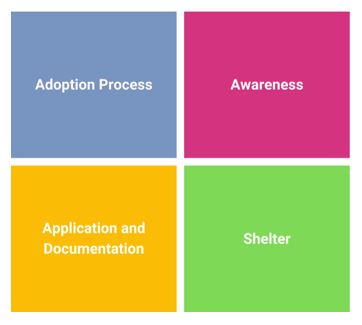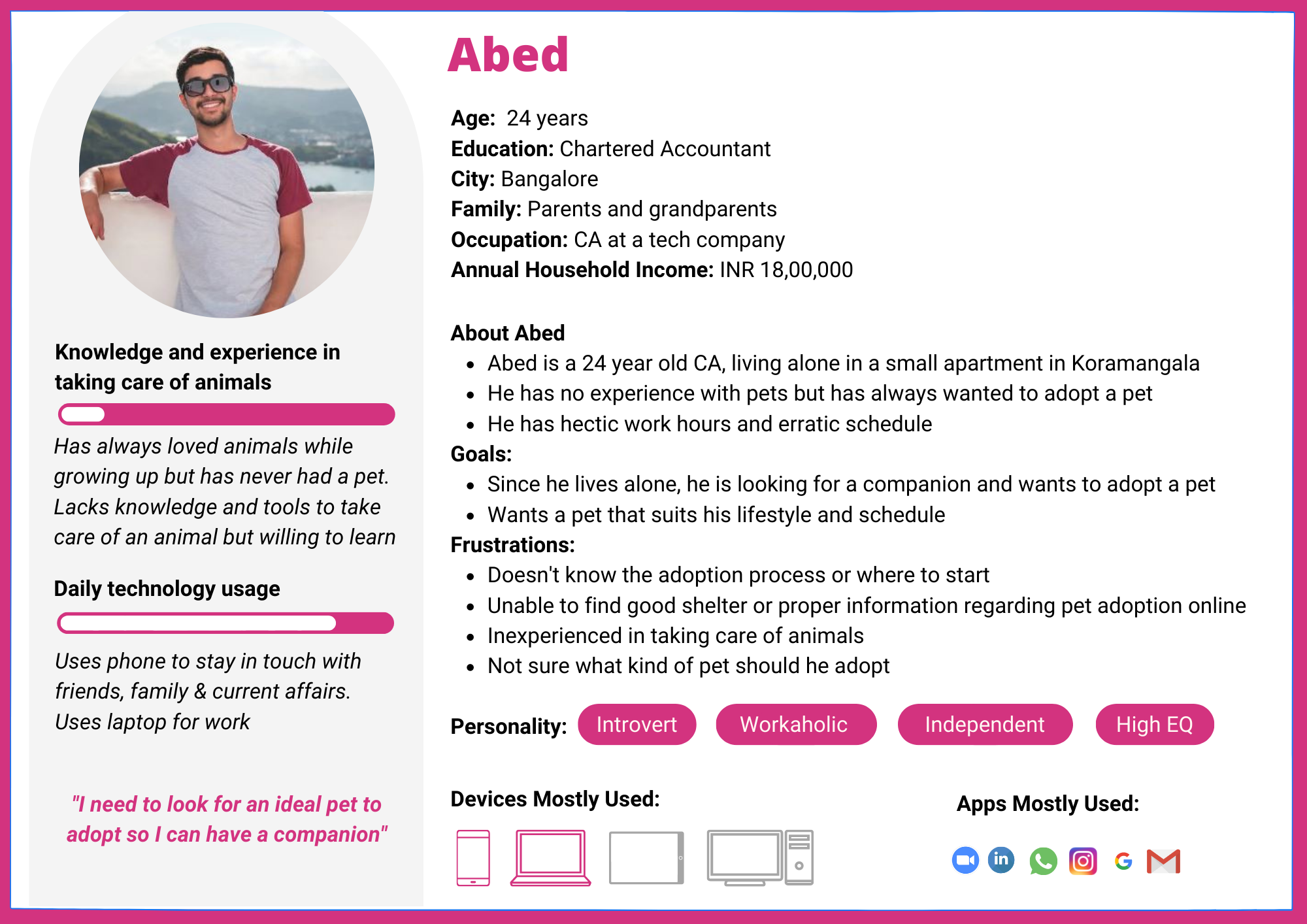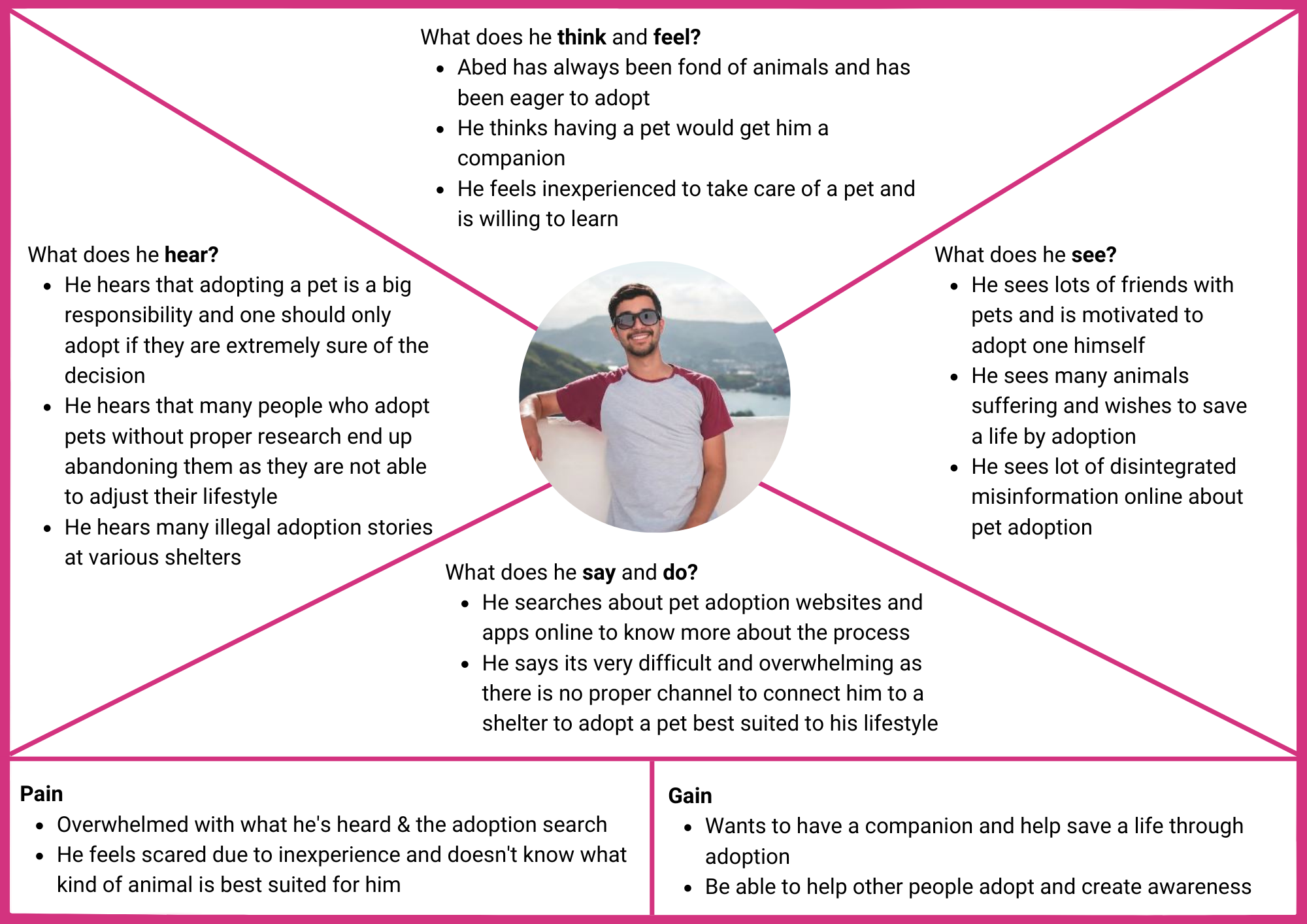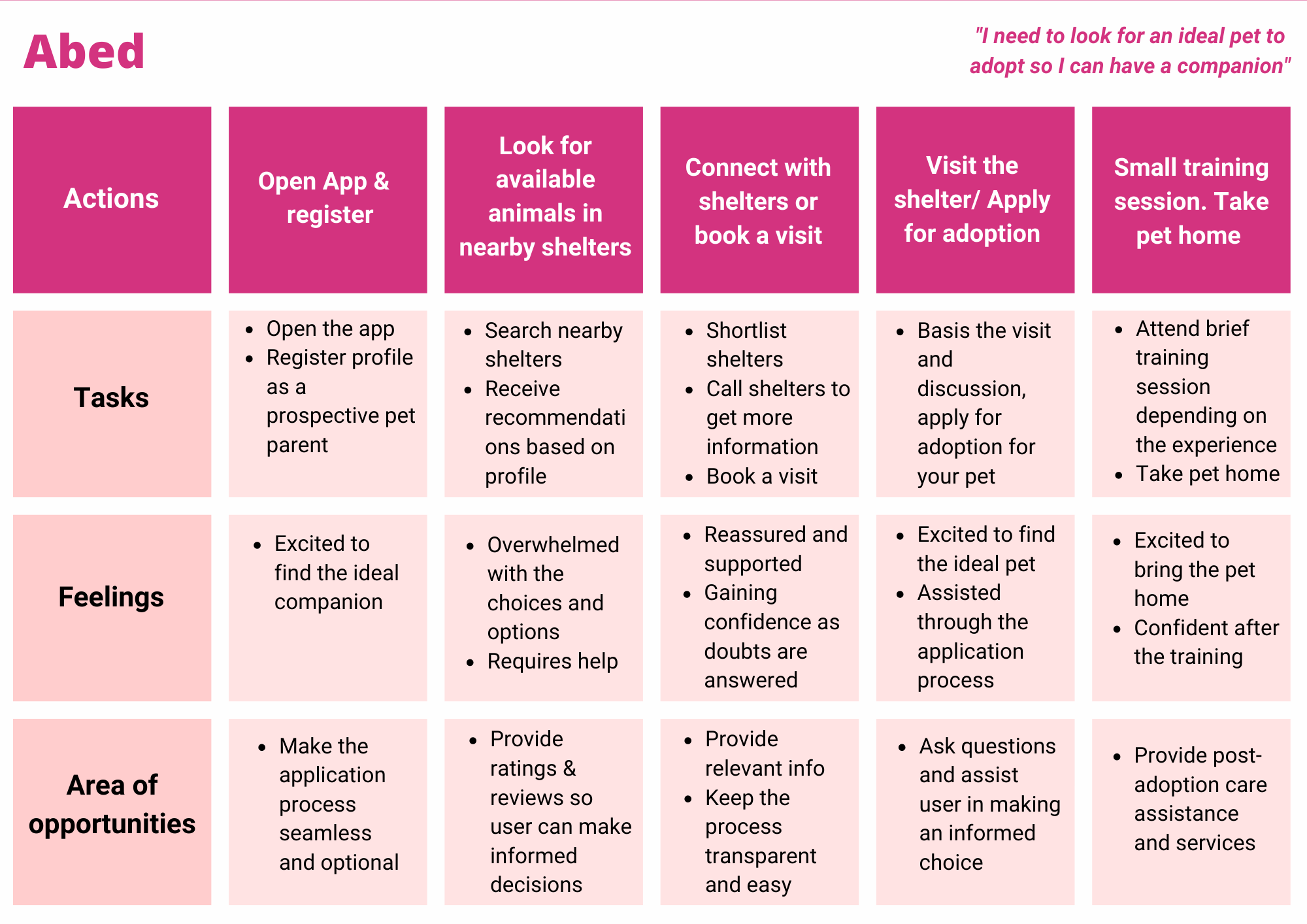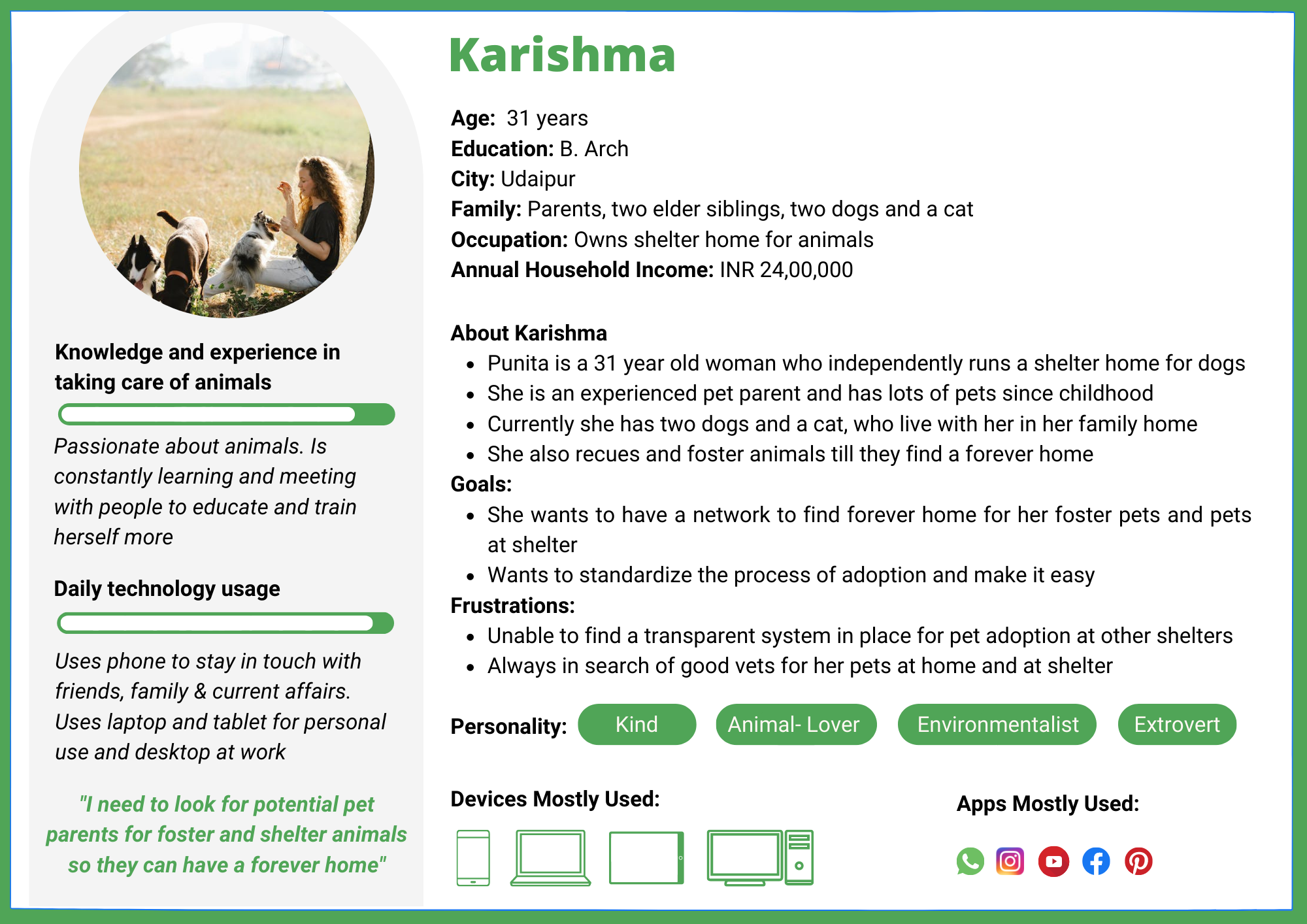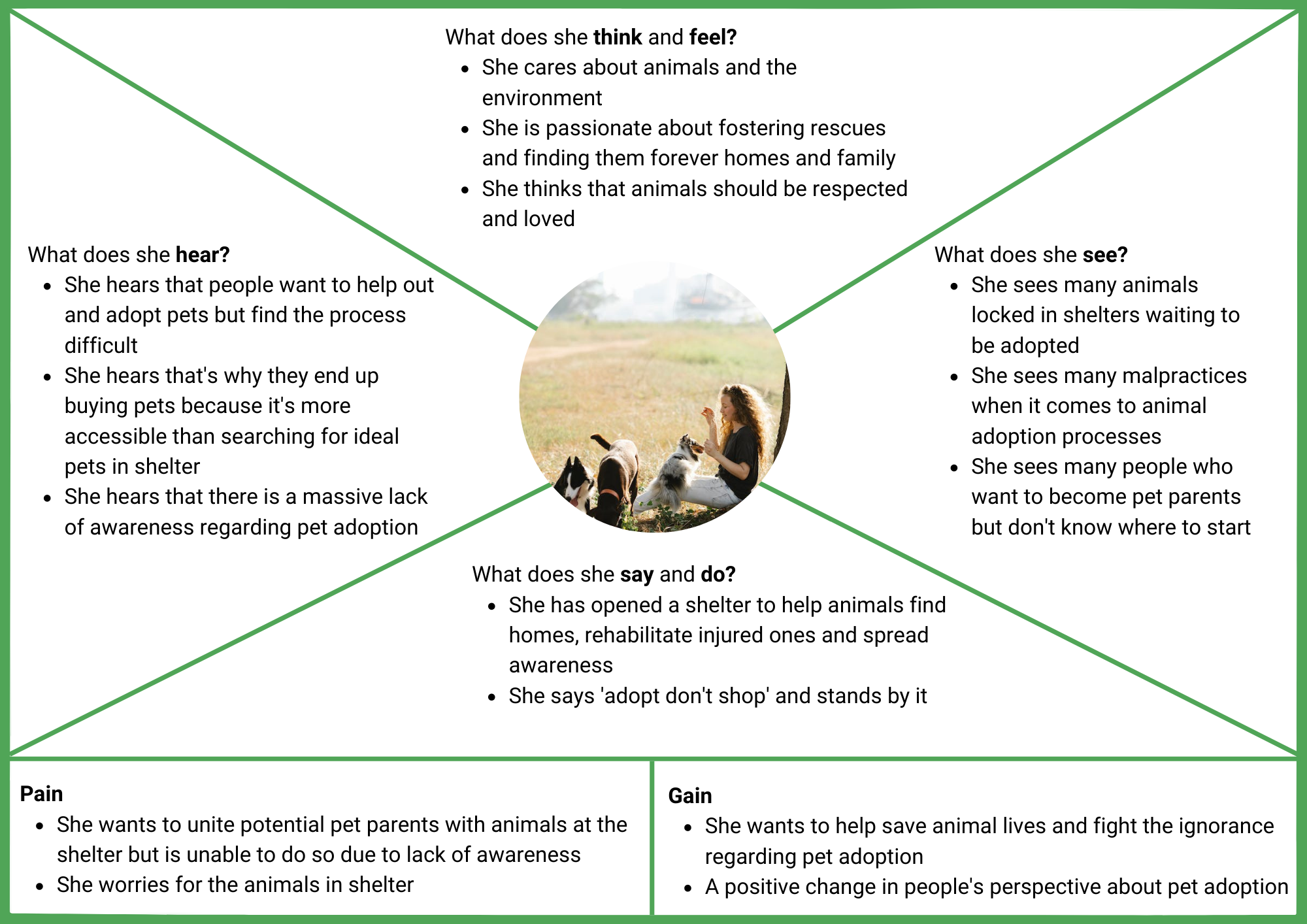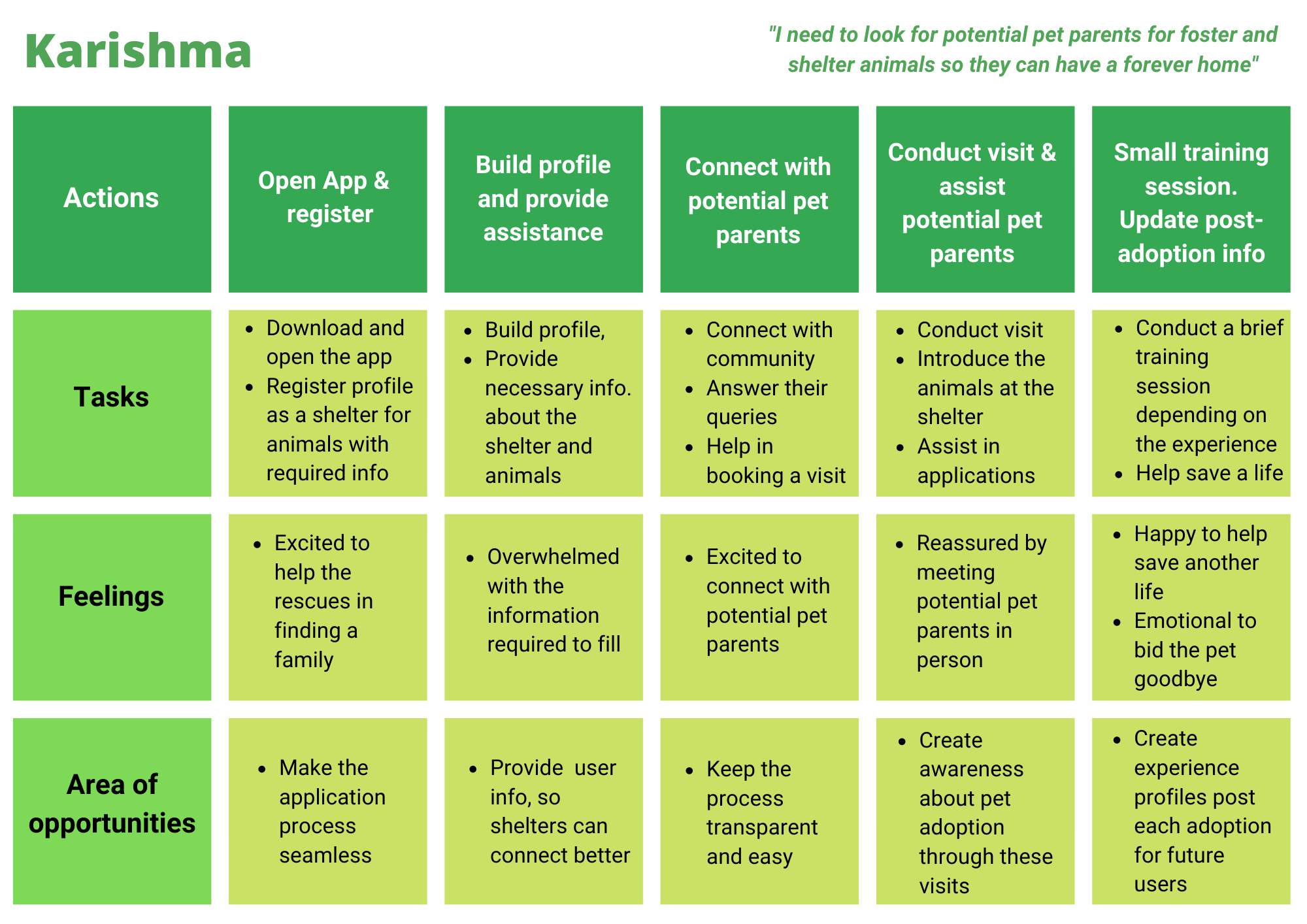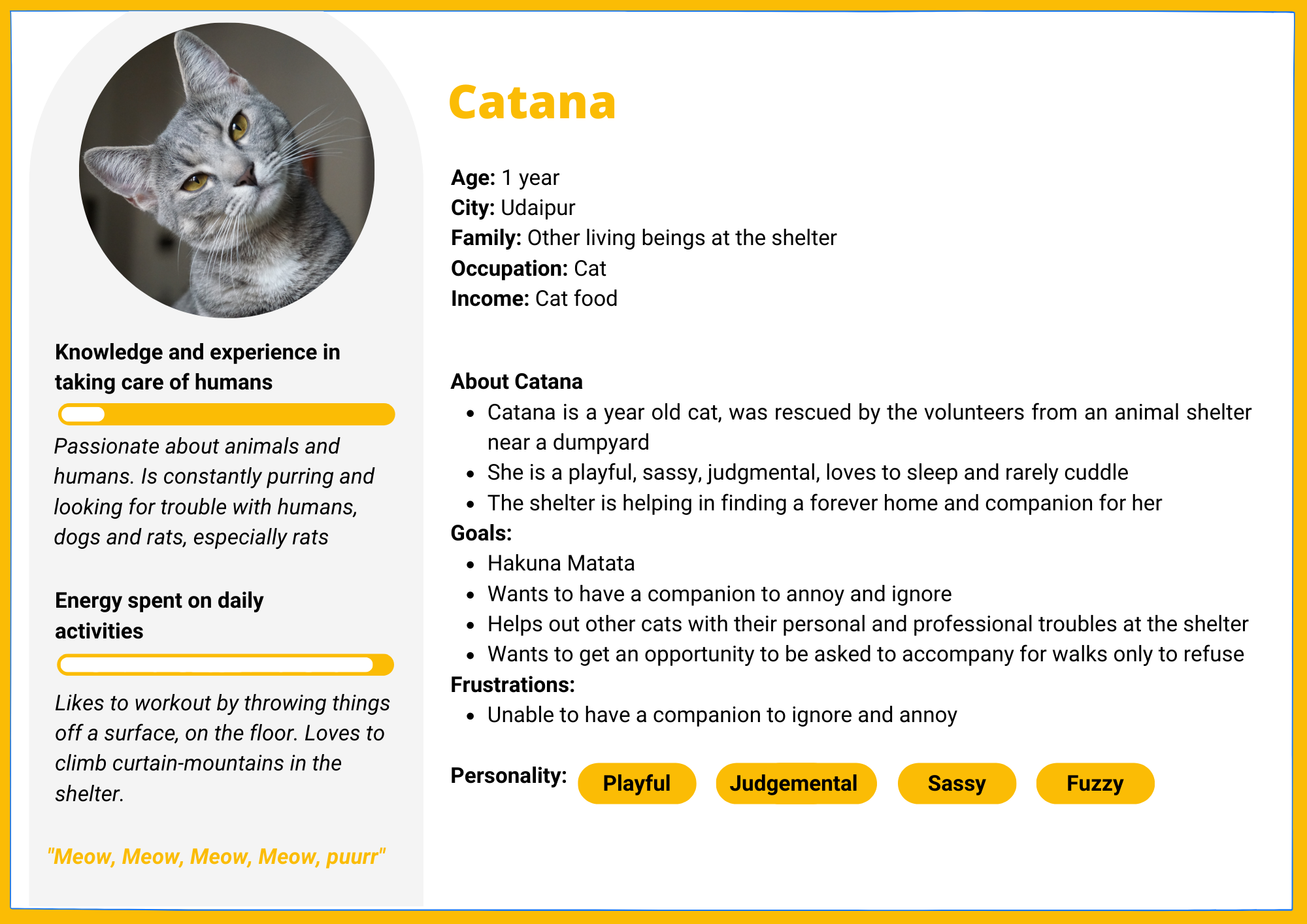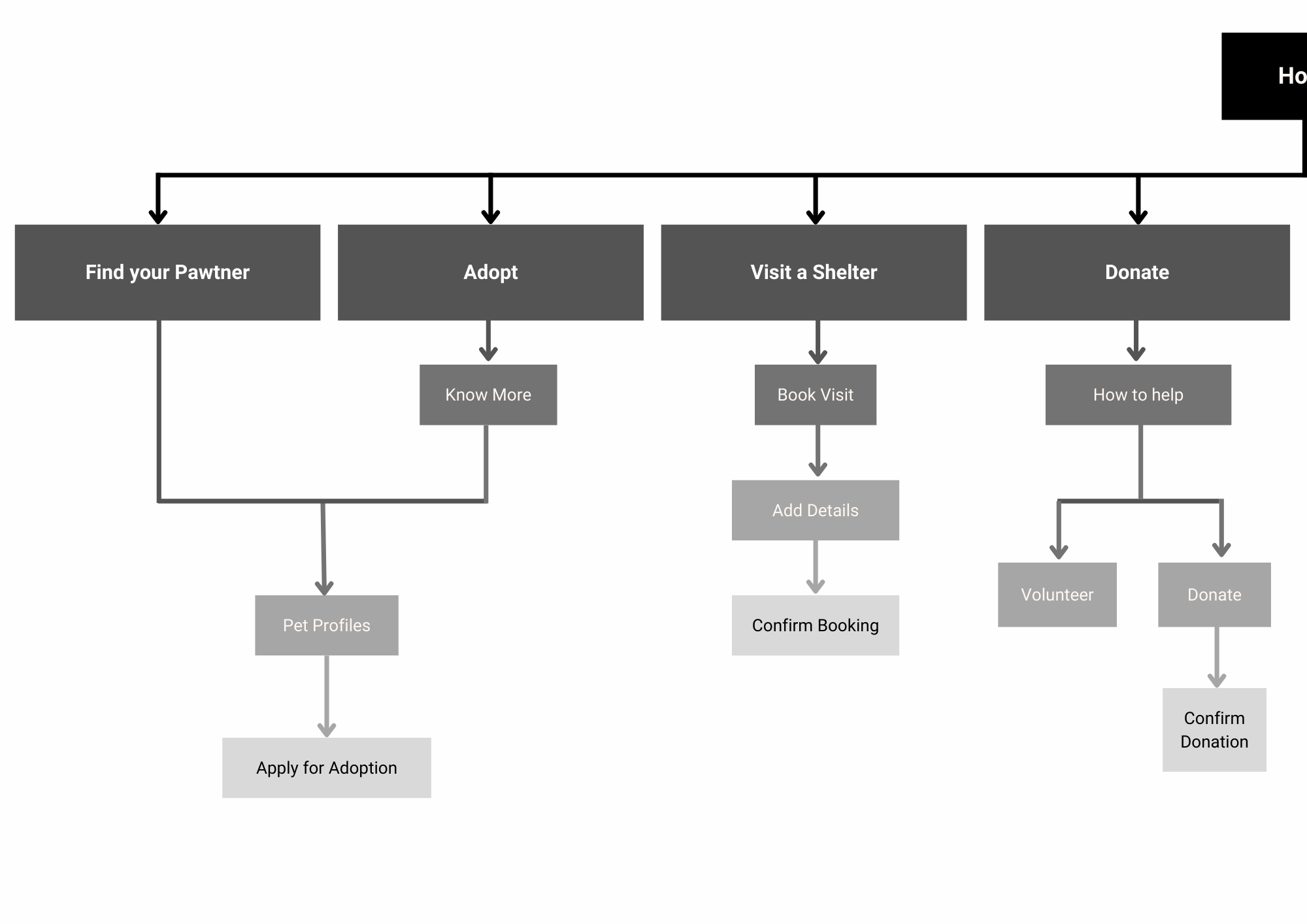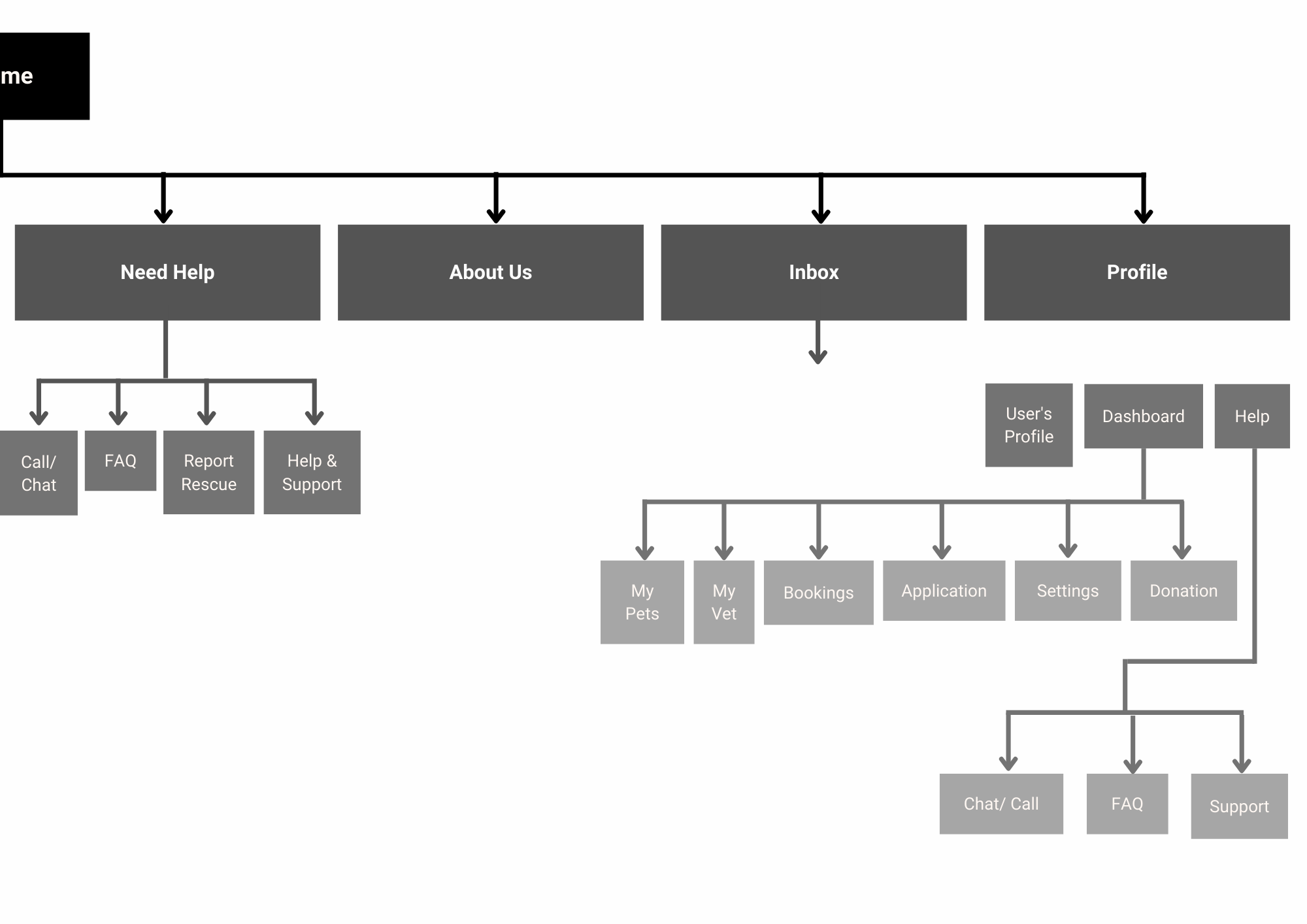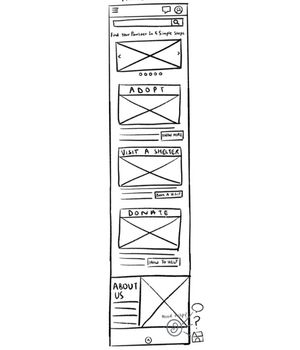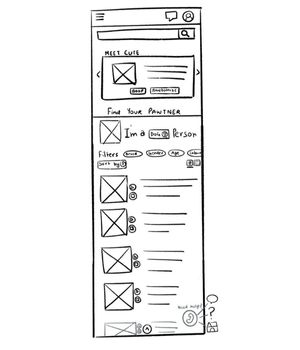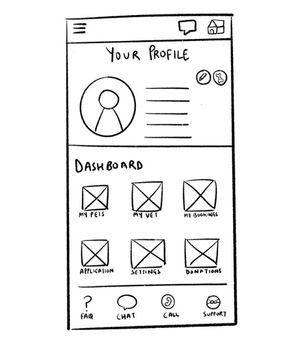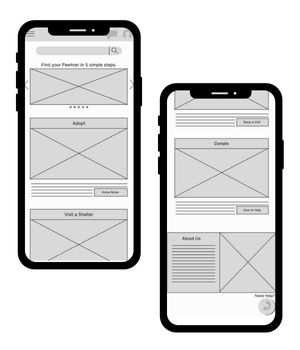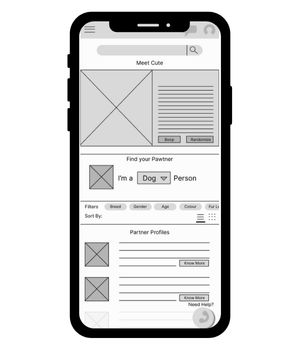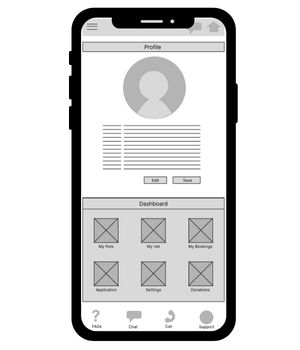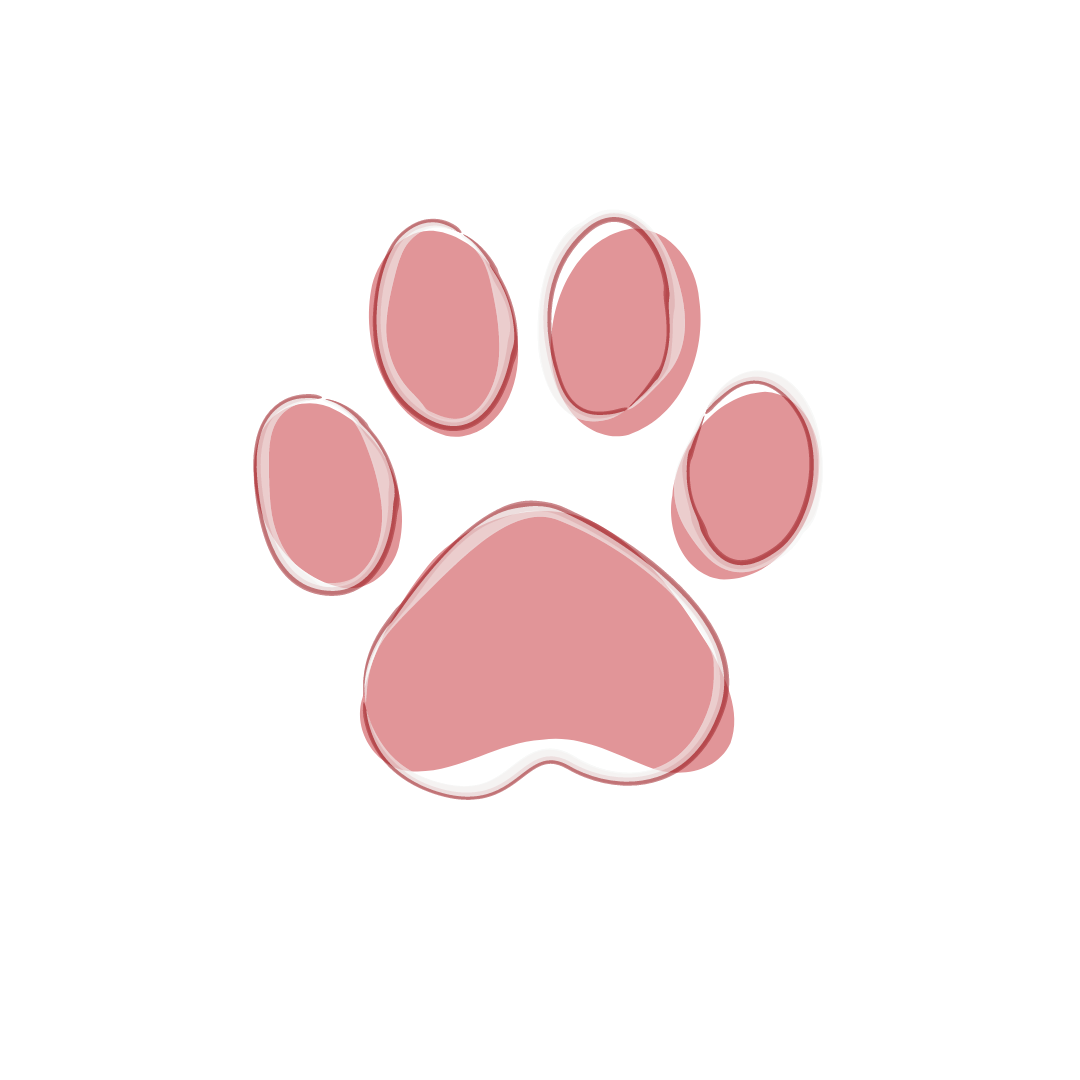
Problem Statement
Pet lovers want to adopt pet suited to their lifestyle but are unable to do so because they do not know where to begin or what is the adoption process
Project Goal
To create an experience for animal lovers to connect with adoption shelters and adopt a pet suitable to their lifestyle
KPI Metrics- Increased adoption rates
Design Process
The framework followed was conducted in five key steps- Empathize, Define, Ideate, Prototype and Test as shown below.
The process helped me to find and implement solutions while keeping user and their needs at the center.
